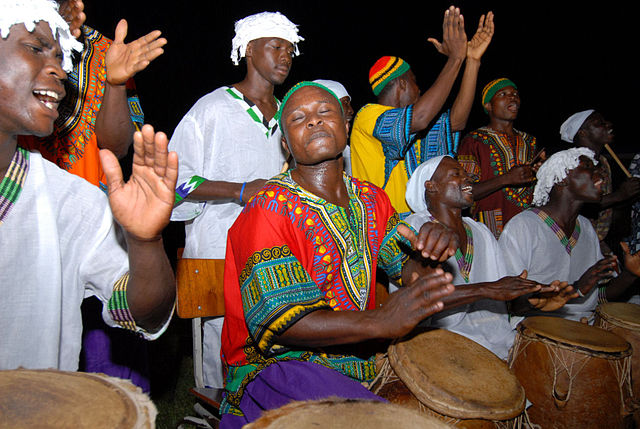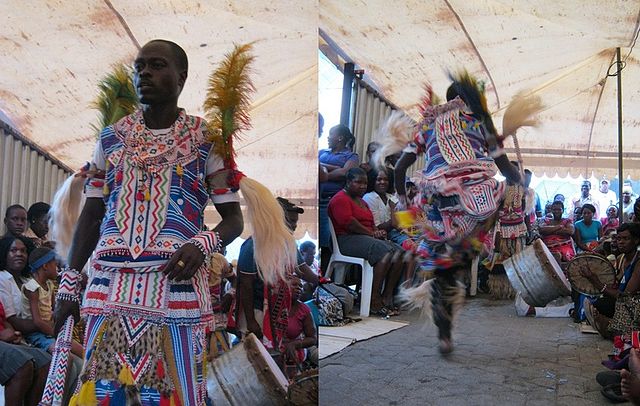Rhythm in Sub-Saharan Africa
Sub-Saharan African music is characterised by a "strong rhythmic interest" that exhibits common characteristics in all regions of this vast territory, so that Arthur Morris Jones (1889–1980) has described the many local approaches as constituting one main system. C. K. Ladzekpo also affirms the profound homogeneity of approach. West African rhythmic techniques carried over the Atlantic were fundamental ingredients in various musical styles of the Americas: samba, forró, maracatu and coco in Brazil, Afro-Cuban music and Afro-American musical genres such as blues, jazz, rhythm & blues, funk, soul, reggae, hip hop, and rock and roll were thereby of immense importance in 20th century popular music. The drum is renowned throughout Africa.
African drum made by Gerald Achee
Drummers in Accra, Ghana
Traditional healer (sangoma) of South Africa dancing to the rhythm of the drum in celebration of his ancestors
Kids in Alexandra township, South Africa, playing around on their father's drums
Sub-Saharan African music traditions
In many parts of sub-Saharan Africa, the use of music is not limited to entertainment: it serves a purpose to the local community and helps in the conduct of daily routines. Traditional African music supplies appropriate music and dance for work and for religious ceremonies of birth, naming, rites of passage, marriage and funerals. The beats and sounds of the drum are used in communication as well as in cultural expression.
Drumming and dancing at Dakawa, Morogoro, Tanzania
African ethnic groups
Gambian boy with bowed tin-can lute
The Malian kora harp-lute is perhaps the most sophisticated of Africa's stringed instruments








